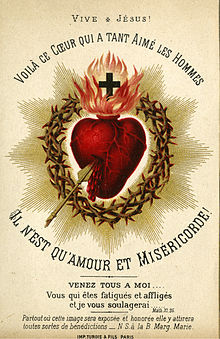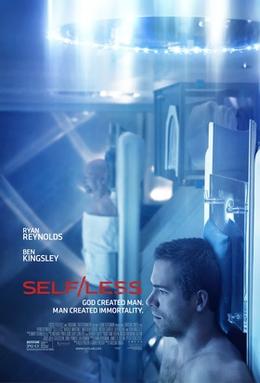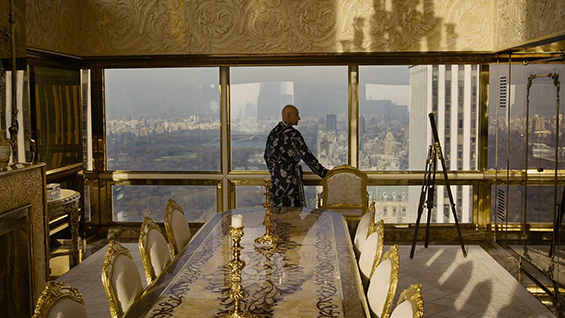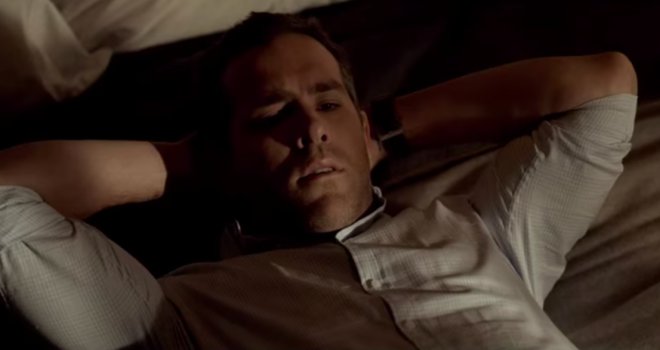On June 3rd, 2016, the Feast of the Sacred Heart of Jesus, we celebrated Mass (with Holy Hour before) at St. Justin Martyr Church in Unionville together, then went for dinner at Sansotei Ramen Restaurant, and went to Jon Santos’ house watch the 2015 movie Self/less on Netflix (we can’t pirate a movie for a wholesome Catholic event now can we?), directed by Tarsem Singh. It was a wonderful opportunity, because the Feast of the Sacred Heart is always the Friday 19 days after Pentecost Sunday and this year, this happened to be the First Friday of the month, so there would be Holy Hour in the evening prior to Mass as well. Also, we were very fortunate to have Fr. David Purcell join us again from the Redemptorists based in St. Patrick Church downtown. Fr. David Purcell very kindly offered to help provide rides to some members and also concelebrated (see this Catholic Encyclopedia article for more details) the Mass with Fr. Michael and delivered the homily. And in another coincidence, we happened to chance upon Iris (GT15 Liturgy Team Leader), who happened to be attending the Mass that day too!
And you, dear souls, why this coldness and indifference… Do I not know that family cares… household concerns… and the requirements of your position in life… make continual calls upon you?… But cannot you spare a few minutes in which to come and prove your affection and your gratitude?… spare a few moments to visit and receive [in Communion] this Prisoner of Love! Were you weak or ill in body, surely you would find time to see a doctor who would cure you? Come, then, to One Who is able to give both strength and health to your soul, and [One Who] watches for you, calls for you, and longs to see you at His side.
This blog reflection consists of two parts: (1) A longer exploration of the Sacred Heart Devotion, and (2) A shorter reflection on the movie Self/less.
Exploring the Sacred Heart Devotion
The Origins of the Sacred Heart of Jesus Devotion

But first of all, where did the Devotion to the Sacred Heart of Jesus come from? As with the vast majority of Catholic devotions, it developed organically over the ages. According to the Catholic Encyclopedia (see link here), its origins lie in the devotion to the love of God which were first articulated by St. John and St. Paul, who loved humanity enough to deliver Himself up for us (John 3:16). There are indications of worship rendered to the mystery of Christ’s open side and the flowing of blood and water, which was seen to signify the Church issuing from the side of Jesus as Eve issued from the side of Adam. But, as the article notes, “this is not the devotion to the Sacred Heart, as it pays no homage to the Heart of Jesus as the symbol of His love for us.”

It was only in the Middle Ages, in the eleventh and twelfth centuries that we find clearer signs of devotion to the Sacred Heart, as the mystery of the wounded side of Christ extended to the wound of love dealt to Jesus’ Heart in either the Benedictine or Cistercian monasteries.
Gradually, over the passing centuries, the devotion took various mystical and private forms, but it was only until St. Margaret Mary Alacoque (1647-1690), a Visitandine from France, that Christ revealed that He wanted a Feast instituted in devotion to His Sacred Heart. In the life of this Saint and in the following centuries, the devotion spread across the world
St. Mary Alacoque once explained the devotion as such: “The Sacred Heart of Christ is an inexhaustible fountain and its sole desire is to pour itself out into the hearts of the humble so as to free them and prepare them to lead lives according to his good pleasure.”
The Sacred Heart of Jesus Devotion Explained
If you are familiar with Catholic devotions, you’ve probably seen images like…

If you look closely, the Sacred Heart of Jesus is always depicted as an inflamed heart encircled with thorns and surmounted by a cross.
And what is the meaning of all this? Firstly, the heart is generally the symbol of the “essence” of a person (and this is true for most cultures and peoples around the world), and particularly a symbol of love. In Latin, the word for mercy, misericordia, consists of the words miseri (“to pity”) and cor (“heart”). In English, we have expressions like “to move one’s heart”, “a change of heart”, or “deep down in one’s heart”. In Chinese, the entire category of emotion-related characters are given the “heart” radical 忄 or 心, and the Traditional character (愛) for love structurally means a “person 夬 that walks 夊 with a heart 心” (see here for details).
Humans, for some reason, physically feel emotions (and this is most true of love) as emanating from where there heart is (a very interesting intercultural study was done on this), and by extension, the Devotion to the Sacred Heart is a celebration of Christ’s love for us.
But the Heart of Jesus is no mere symbol either, for being God in the Flesh, His Heart is part of His Body as well. In a way, then, we can see the Devotion to His Sacred Heart as a celebration of Christ’s love made incarnate as a man, and given to humanity through the Blessed Sacrament. As Fr. Purcell put it during the homily that day, Christ desires so much that we can be with Him that He makes Himself openly available in the Eucharist to receive and adore. Every time we go to Eucharistic Adoration (like on that First Friday) or receive Him in the Eucharist, He says to us, “Come to me, let us be lovers!”
The Essentials of the Sacred Heart Devotion
But what are the concrete and essential elements of the Sacred Heart Devotion? As Fr. William G. Most remarks in his Devotion to the Sacred Heart of Jesus article hosted on EWTN, “[t]he essential devotion does not consist in singing hymns or lighting vigil lights, though these are good.” Instead, he points out Pope Pius XI’s quote (bolded emphasis added by me) in the Acta Apostolicae Sedis (the official gazette of the Holy See): “…if the first and chief thing in consecration is the repayment of the love of the creature to the love of the Creator, the second thing at once follows from it, that, if that Uncreated Love has been neglected by forgetfulness or violated by offenses, compensation should be made in some way for the injustice that has been inflicted: in common language we call this debt one of reparation….”
Fr. Most says that this Devotion has two essentials: consecration and reparation.
When one consecrates oneself to the Sacred Heart of Jesus, we acknowledge God has full rights over us and that we owe Him everything. However, we still beg Him to kindly accept graciously accept our own gifts, even though they already belong to God. This we do not because of any settling of debts, but because it is something good and pleasing in the eyes of God.
As for reparation, Fr. Most explains that “[a]ll sin is a debt. The Holiness of God wants it paid.” Humanity throughout the ages has sinned against God, even in the times when holiness flourished or the Catholic faith was an integral part of everyday life. And especially in modern times, when the Name of Christ is insulted, the Image of His Face ridiculed, and the the Holy Sacrifice of the Mass faced with indifference, there is a great need for these sins to be repaid. As the writings of St. Mary Margaret of Alacoque indicate, Christ’s Sacred Heart is pained every time He is faced with coldness and indifference when He reaches out with love and mercy to every person. As such, the Church has always taught that faithful Catholics can “rebalance” this injustice by giving property back in the case of theft, or giving up a pleasure in the case of stolen pleasure … even if the person addressing the wrong was not the perpetrator. This mirrors the great Mystery of the Passion, wherein God sent His only Son to this world for “full rebalance” – to give us salvation where our sins do not warrant it, even when God “did not have to, but did will it.”
A Life Well-Lived: A Reflection on the film Self/less (with minor spoilers)

You’ve built en empire from the ground up. People will insist that your buildings make you immortal. Now, as you slip away, do you feel immortal? We offer humanity’s greatest minds more time to fulfill their potential. Designed to offer you the very best of the human experience.
— Professor Albright, to Damian Hale, pitching his “shedding” procedure
If you take a look at online ratings for Self/less, a 2015 sci-fi movie directed by Tarsem Singh, you will see that it has an almost universally negative reception. The consensus among the critics seems to have been that the premise was a highly promising one but that the plot degenerates into a simple shoot-em-up movie later in the plot.
I’ll admit – there were many places where the action obscured the character development and the exploration of a very interesting premise, but I enjoyed the movie much more than the Internet critics seem to have enjoyed it. The movie (without giving any spoilers), is based on a simple sci-fi premise: a radical technology called “shedding” that allows the transferring of a person’s consciousness into another body, producing a sort of immortality. The old and wealthy Damian Hale has built up a business empire over the years and has a lavish lifestyle, which has led to his estrangement from his mature daughter, Claire Hale, who is the founder of an environmentalist activist group that Damian strongly disapproves of. But one day, he is diagnosed with a terminal illness that will kill him in six months and decides to undergo shedding in order to get a second chance in life as a younger man with one catch – he cannot contact anyone from his previous life.

As suggested by the above quote from Professor Albright (the pioneering researcher of this technology), the technology attempts to bridge an age-old “problem” with mortality – that humans never seem to have enough time to use their lives well. In one scene of the movie, Professory Albright talks of the many valuable contributors to humanity who died before potentially producing even greater things for civilization, people like “Einstein, Edison, Steve Jobs” (although the merits of Edison and Jobs are a stretch of logic, if you ask me).
When Damian Hale first transfers from his old body into that of a young man and becomes “Edward Kidner”, he becomes ecstatic, finally freed from the physical limitations of old age. And what does he do with this second chance at life? Does he use his prior business expertise to build an even more formidable business? Does he go to school to become a more competent and distinguished leader? Does he seek to build up a happier family? No, no, and no. He decides to indulge in basketball, peanut butter (he was allergic to peanuts in his prior body), clubbing, and promiscuous sex with attractive young women (he still controls the monetary fortune of his prior life). Clearly, these were the things that the new Damian Hale had lusted after through the many decades of being a super-rich business tycoon.

This little snippet of the movie already made me think a lot – if I were to get another chance at living my life better, what would I do with it? Would I study harder at school? Would I found a start-up company and get rich? Would I spent more time with friends? Would I party around, drink, and have promiscuous sex?
Time is a funny thing. When the times are pleasant, it can fly quickly by; when the times are difficult, even a minute may feel like an entire day. We often long for a beautiful future, but once it becomes the present, and then the past, we are left with the past. Often, we say that “time flies,” and this is most true when we are faced with the hard reality that time once passed can never come back again.
How will you use your remaining time in this world? When you look back on your worldly life at the particular judgment (the one immediately after death) with God, will you see it as a life well lived, a holy and honourable life that has raised you to God in heaven? Or a life of dissipation and debauchery that has dragged you down to hell, and away from God?
Let us pray to St. Joseph, our patron, in the words of this prayer by Pope St. Pius X (reigned 1903-1914), so that we may start each day with a commitment to using our time well in service of the Will of God:
Glorious St. Joseph,
model of all those who are devoted to labour,
obtain for me the grace to work conscientiously,
putting the call of duty above my many sins;
to work with thankfulness and joy,
considering it an honour to employ and develop,
by means of labour,
the gifts received from God;
to work with order, peace, prudence and patience,
never surrendering to weariness or difficulties;
to work, above all, with purity of intention,
and with detachment from self,
having always death before my eyes
and the account which I must render of time lost,
of talents wasted, of good omitted,
of vain complacency in success so fatal to the work of God.All for Jesus,
all for Mary,
all after thy example,
O Patriarch Joseph.
Such shall be my motto in life and death.Amen.
Sacred Heart of Jesus, pray for us!
St. Joseph, pray for us!
God bless you all,
UTCCC
(Written by Lyndon)






